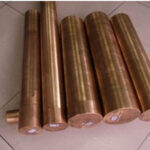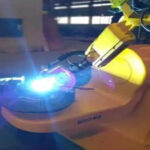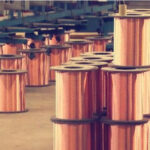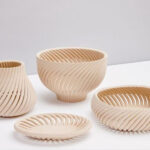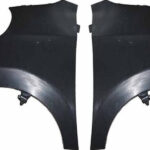T73 Artificial Aging Specification for Plates, Extrusions and Forgings
Among the aluminum materials for aerospace vehicles in China, 7A09 alloy is one of the preferred high-strength alloys for the main stressed structural parts. The semi-finished products available include plates, strips, bars, profiles, thick-walled tubes, forgings, etc. The chemical composition is more reasonable than that of 7A04 alloy, so it has superior comprehensive performance and becomes one of the designer’s main materials. Its chemical composition (mass%): 0.5Si, 0.5Fe, (1.2—2.0) Cu, 0.15 Mn, (2.0-3.0) Mg, (0.16-0.30) Cr, (5.1-6.1) Zn, 0.10Ti, other impurities are individually 0.05, totaling 0.10, and the rest is Al.
7A09 alloy has good forming properties in the annealed and solution treatment states. After artificial aging, the forming properties are lower, and the fracture toughness is satisfactory in the T6 state; although the strength under the T73 overaging state is lower than that in the T6 state, It has good resistance to stress corrosion cracking and has high toughness. T76 material has high resistance to spalling and corrosion. T74 has high strength and resistance to stress corrosion cracking at the same time.
The tensile strength Rm of 7A09 alloy is higher than that of 2A12 and 2A14 aluminum alloys, and its stress corrosion cracking resistance is also higher than theirs. Therefore, the use of it to manufacture aircraft parts not only has a greater weight reduction effect, but also has higher safety. Therefore, its fatigue strength has not been increased accordingly. Therefore, it is necessary to seriously consider this issue when designing components that are mainly subjected to fatigue load. When the temperature rises, the strength of 7A09 alloy decreases rapidly, so its working temperature should not exceed 125°C.
Incomplete annealing specification of 7A09 alloy: 290℃——320℃, 2h——4h, air cooling; complete annealing specification: (390℃——430℃)/(0.5h——1.5h), with ≤30℃/h The cooling rate is less than or equal to 200℃, and then air-cooled out of the furnace.
The solution treatment temperature of this alloy is 460℃—475℃, but the treatment temperature of the aluminum-clad sheet should be lower than the lower limit, not more than 2 times, so as to prevent the alloy elements from penetrating the aluminum-clad layer and reduce the corrosion resistance of the material. The cooling medium is Room temperature, warm water or other suitable medium, the transfer should not be more than 15s. The processing temperature of T6 plate is (135℃±5℃)/(8h—16h), and for other materials, it is (140℃±5℃)/16h. See the table for the artificial aging specifications of T73 plates, extruded materials and forgings.
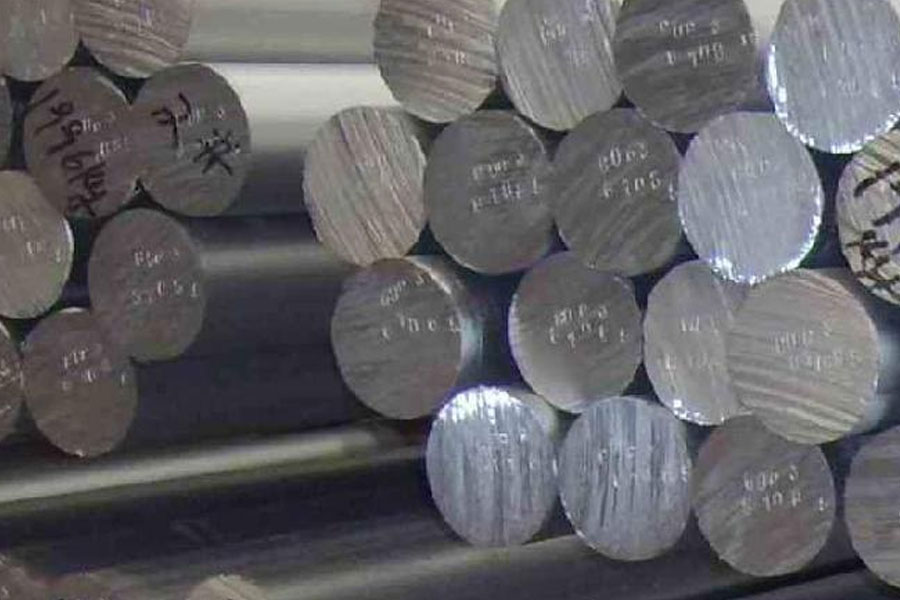
The smelting equipment of 7A09 alloy is the same as that of other wrought aluminum alloys. The melting temperature is 710℃-750℃, and the casting temperature is 710℃-735℃. The size of the ingot is smaller and the lower casting temperature is selected. The melting temperature of the alloy is 477℃. ——638°C.
7A09 alloy is an important structural aluminum alloy for stress. It has been widely used in the manufacture of fighters, medium-range bombers, transport aircraft and trainers. It is used to manufacture nose landing gear parts, wing front beams, beams, and fuselage docking. Frame support arms and pillars, partitions, ribs, main beam joints, flat tail upper and lower wall panels, hydraulic system parts, hydraulic oil tank piston rods, inner and outer cylinders and other key parts.
The fracture toughness (Kc, N/mm2,) of 7A09-T73 alloy is higher than that of T6 material, and its crack growth rate is lower than that of T6 material. Its fatigue strength is also better than that of T6 material, and its thermal conductivity is also higher than that of T6 material. The specific heat capacity of 7A09-T6 alloy at 50°C is 888J/(kg.°C), and the room temperature conductivity is 18.5MS/m. Except for the stress corrosion cracking performance, the general corrosion resistance of 7A09 alloy is equivalent to that of 2A12 alloy. 7A09 alloy is sensitive to stress corrosion cracking in the S-T direction, and the stress corrosion threshold in the L-T and L directions is greater than 300N/mm2, so the stress corrosion cracking resistance in these two directions is sufficient to meet the requirements of use. If the requirement is higher, T73 material can be used. The tensile strength Rm of the material in this state is about 10% lower than that of the T6 material, but the stress corrosion cracking threshold value in the L-T direction is much larger than that of 300N/mm2.
For parts that require both strength and stress corrosion cracking performance, T74 state materials should be used. The stress corrosion cracking threshold of 7A09-T74 alloy die forgings is 210N/mm2. The anti-corrosion measures of 7A09 alloy include anodic oxidation, chemical anti-corrosion treatment and paint coating.
The structure of 7A09 alloy consists of α-Al solid solution and second phase particles. The second phase has three types: the first type is intermetallic compounds formed during alloy solidification, such as Al7FeCR, Al3Fe, and Mg2Si. The size is relatively large. It is crushed into lumps and distributed in clusters. The size is 0.5μm-10μm. It is insoluble in solid solution when heated and reduces the toughness of the material. The second type is chromium-containing particles such as Al2CrMg2, which are ingots that are homogenized and It is precipitated from the solid solution during the heating process before processing, and its size is 0.05μm-0.5μm, which has a significant hindrance to the recrystallization process and grain growth of the material; the third type is the aging strengthening phase, which is the solid solution treatment. Incorporating into solid solution and aging out from solid solution are important factors affecting material properties. The strengthening particles of T6 state materials are mainly the GP zone ≤4nm, the main strengthening particles of T74 material are the transition phase η’of 5nm-6nm, the strengthening phase of T73 material is the transition phase η’of 8nm-12nm and 20nm-80nm Η phase particles.
The formability of the 7A09-O material is equivalent to that of the 2A12-O alloy, and it has good formability at 180°C-370°C; the formability of the new quenched material is roughly the same as that of the 2A12 alloy. The plate is quenched at room temperature for 4h There is still good formability inside, and the time for freezing to maintain formability: 24h at 0℃, 3d at -7℃, 7d at -18℃.
The forging temperature of 7A09 alloy is 320°C-440°C, and the opening forging temperature should be ≤400°C. Too high will cause hot brittleness, especially during free forging. 7A09 alloy is not easy to weld, even resistance welding is not as good as 2A12 alloy. Forgings can be quenched in hot water ≤80℃. The 7A09 alloy after quenching and effective treatment has good machinability.
Link to this article: The Preferred Structure Of Aircraft Aluminum Alloy 7A09
Reprint Statement: If there are no special instructions, all articles on this site are original. Please indicate the source for reprinting:https://www.cncmachiningptj.com/,thanks!
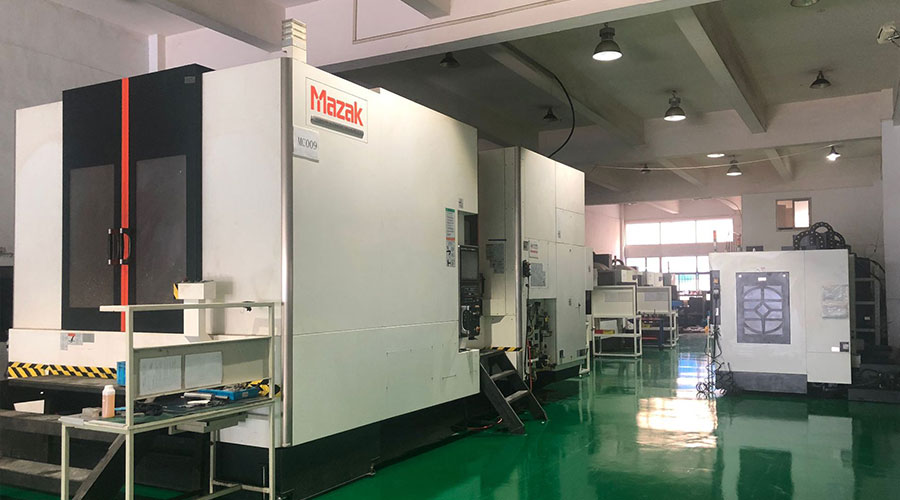 3, 4 and 5-axis precision CNC machining services for aluminum machining, beryllium, carbon steel, magnesium, titanium machining, Inconel, platinum, superalloy, acetal, polycarbonate, fiberglass, graphite and wood. Capable of machining parts up to 98 in. turning dia. and +/-0.001 in. straightness tolerance. Processes include milling, turning, drilling, boring, threading, tapping, forming, knurling, counterboring, countersinking, reaming and laser cutting. Secondary services such as assembly, centerless grinding, heat treating, plating and welding. Prototype and low to high volume production offered with maximum 50,000 units. Suitable for fluid power, pneumatics, hydraulics and valve applications. Serves the aerospace, aircraft, military, medical and defense industries.PTJ will strategize with you to provide the most cost-effective services to help you reach your target,Welcome to Contact us ( [email protected] ) directly for your new project.
3, 4 and 5-axis precision CNC machining services for aluminum machining, beryllium, carbon steel, magnesium, titanium machining, Inconel, platinum, superalloy, acetal, polycarbonate, fiberglass, graphite and wood. Capable of machining parts up to 98 in. turning dia. and +/-0.001 in. straightness tolerance. Processes include milling, turning, drilling, boring, threading, tapping, forming, knurling, counterboring, countersinking, reaming and laser cutting. Secondary services such as assembly, centerless grinding, heat treating, plating and welding. Prototype and low to high volume production offered with maximum 50,000 units. Suitable for fluid power, pneumatics, hydraulics and valve applications. Serves the aerospace, aircraft, military, medical and defense industries.PTJ will strategize with you to provide the most cost-effective services to help you reach your target,Welcome to Contact us ( [email protected] ) directly for your new project.
Table of Contents
Link to this article:The Preferred Structure Of Aircraft Aluminum Alloy 7A09
Reprint Statement: If there are no special instructions, all articles on this site are original. Please indicate the source for reprinting.:Cnc Machining,Thank!^^

